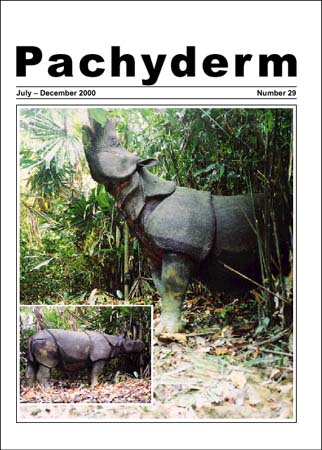Effects of habitat on visibility of elephants during aerial census
Abstract
Relocating individual radiocollared elephants during an aerial survey in northern Zimbabwe provided an opportunity to assess the effects of habitat and topography on the aerial visibility of elephants. Sightings were considered 'failed' when no elephants could be seen by aerial observers after the aircraft had flown in a tight circle around the radiocollar signal for some 8 minutes. These situations, which amounted to 15% (n=88) of the sightings, all occured in steep, rocky hills covered with high-canopy woodland and incised by narrow, thickly wooded valleys. This type of terrain did not cover enough of the study area to affect the accuracy of the census estimate. However, this trial served to illustrate localized failure rates of elephant visibility which can be appreciated by those seeking to improve routine census techniques.
Downloads
Published
How to Cite
Issue
Section
License
Copyright (c) 2000 Richard E. Hoare

This work is licensed under a Creative Commons Attribution-NonCommercial 4.0 International License.




